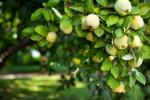Winter in Central Europe is a test of strength for many plants and ensures that only a few plants develop decorative flowers. However, the month has many advantages over January, as it is slowly getting warmer and lighter, which gives many harbingers of spring the opportunity to bloom. The classics of February include the pansies and of course the daffodils, which especially like to sprout when there is enough sun. In addition to the species that only bloom in February, there are some plants that bloom from mid-winter, such as the Christmas roses.
Flowering plants have one thing in common and that is a great need for sufficient sunlight. The combination of sunlight and nutrients in the soil ensures effective bud formation, which in most cases doesn't even require great winter protection. If you are looking for a suitable flowering plant for February, this list will help you.

Heart leaf flower, Anthurium clarinervium: Care A-Z
With its heart-shaped, whitish-green veined leaves and slightly wavy at the edges, the heart leaf flower immediately catches the eye. They are the greatest ornament of this attractive ornamental foliage plant.

Indoor begonias, Begonia elatior hybrids: care
The indoor begonia can be a wonderful addition to the interior, but it also has some maintenance requirements. You can find out what to look out for here.

Leaf Begonia, Begonia rex: Care from A-Z
Do you want to design your home with houseplants, but you don't have the green thumb? Choose leaf begonias! Attractive varieties with brightly colored foliage are available. We give tips on care.

African violets, Saintpaulia ionantha: care and location
African violets have been popular houseplants for decades as they bloom abundantly. The classic flower colors of the plants are dark purple, white and pink. Today there are around 2,000 hybrid varieties, so that no wish remains unfulfilled when it comes to choosing. The flower color today ranges from white to dark purple, with a wide variety of shades being offered. You can also choose between single and double flowers. The height of the plants including the flower is 10 to 40 centimeters.
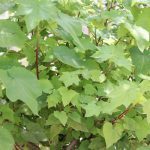
Linden tree, Sparmannia africana: care from A-Z | Is it poisonous?
The name Zimmerlinde is deceptive. What reminds us of a local linden tree with its light green, heart-shaped, hairy and almost translucent leaves is actually an African tree. Indoors, its growth remains modest, but can still reach the ceiling. This linden tree improves the room climate and, according to Far Eastern Feng Shui, also the flow of energy. If it is well cared for in this country, this immigrant sapling even contributes a few enchanting flowers.
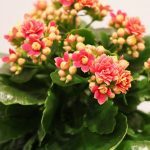
Flammendes Käthchen, Kalanchoe blossfeldiana - care from A-Z
The Flaming Käthchen is a robust plant that does not make great demands on care. Originally the little beauty from Madagascar was only available with red flowers, but now it also delights us with yellow, pink, white and purple flowers. However, in order for these to develop, a little trick is required.

Snow banana, Ensete glaucum - care from A-Z
The snow banana is a robust banana tree from the Ensete genus, which impresses with its rapid growth and imposing stature. It not only grows up to five meters high, but also forms leaves that can reach a length of two meters. Only with a lot of luck does it develop fruits that are inedible for humans but contain seeds. These are used for the propagation of the Ensete glaucum, as other methods do not work.
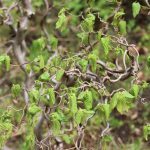
Corkscrew hazel, Corylus avellana 'Contorta' - care and cutting
The corkscrew hazel, botanically Corylus avellana Contorta, impresses with its spirally twisted branches. In early spring the shrub forms male catkins, which bring the first splash of color into the garden with their golden yellow color. Corylus avellana does not make great demands on the care, but allergy sufferers should better avoid the non-toxic ornamental shrub, as the pollen can trigger hay fever.

Spit palm, Euphorbia leuconeura: care from A-Z | Is it poisonous?
The spit palm, also known as spring palm or simply spit plant, is a milkweed plant that distributes seeds via a special type of seed. The plant opens the capsule fruits and shoots the seeds over a range of several meters, which has earned it the name spit palm. In addition, the palm is popular with many gardeners, because its tropical character allows it to blend in nicely with the ambience. You just have to be careful about their toxicity when keeping them.

Poinsettia: care and pruning of the winter plant from A-Z
Every year it appears in numerous specialty shops and even supermarkets. We are talking about the poinsettia, botanically also called Euphorbia pulcherrima, which enjoys great popularity year after year during the Christmas season. But what kind of care does the milkweed plant actually need? Poinsettias are perennial plants native to South America. The bush-like growth of a height of up to six meters in the home is rarely found here, as we cultivate the poinsettia as a container plant. In many cases, the poinsettia in this country only lasts one Advent season. This is a shame, because with the right care, the graceful plant can easily last for a few years.

Room cyclamen, Cyclamen persicum - care from A-Z
The indoor cyclamen is one of the most popular and most widespread potted flowers in Germany. When nature loses its color in autumn, it ensures a good mood during the gray season with brightly shining flowers until spring. However, when it comes to care, the Cyclamen persicum is a plant in which a few details should be observed. With the help of professional care instructions, plant lovers of indoor cyclamen will be rewarded with abundant flowers and a long, healthy life.

Date palm, phoenix palm - care from A-Z and overwintering
The date palm fills rooms and adorns gardens with a touch of the Caribbean. It has a low maintenance requirement and is considered an undemanding plant that, depending on the species, can even overwinter outdoors if properly prepared. You can find out what it is and what else you should know about the Phoenix palm at Plantopedia.
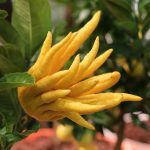
Lemon, Buddha's hand, Citrus medica - care of the lemon
The lemon 'Buddha's hand' is probably the most unusual form of citrus medica. It comes from Southeast Asia and is mainly used for the production of citron pate. Their scent is sweet. The flowering time is all year round. The approx. 10-20cm long fruits are reminiscent of hands and fingers: hence the name 'Buddha's hand'. In Buddhism it is used as an offering in temples.

Phalaenopsis, butterfly orchid - care & repotting
The Phalaenopsis is one of the front runners among the indoor plants and the most popular of all orchids. The shapely and blooming plants come in countless color variations. Even if orchids are often decried as little divas, the Phalaenopsis tolerates minor care errors, so that even beginners can try their hand at them. With appropriate care, they impress many weeks a year with their breathtaking blossoms.
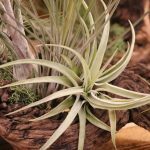
Tillandsia, Tillandsia - species & care instructions
With over 550 species, the plant genus Tillandsia is considered to be the most species-rich within the bromeliad family (Bromeliaceae). Due to their ease of care and their attractive leaves, Tillandsia have enjoyed increasing popularity as a houseplant for years. The shape and color of the plant, which is also often referred to as an air plant, amaze many. The following care instructions show how it grows and thrives optimally.
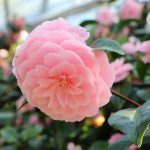
Camellias, Camellia japonica - varieties, care and wintering
Fascinating and exotic - these two words can be used to describe Camellia japonica. The camellias, which come from Asia, have enjoyed great popularity among passionate hobby gardeners for decades. Completely wrongly, the tea bush plant is said to require expensive and difficult care. With the right tips and patience, it is easy to cultivate the distinctive plants and promote their flowering in winter.

Calla, Zantedeschia, Zimmercalla - planting and care instructions
The calla or room calla is originally at home in the South African swamps. As its name suggests, it should generally be cultivated in a room. But there is nothing wrong with indulging the graceful beauty in the fresh air outside in summer, if the appropriate warmth allows it. But with its yellow, lilac, white or pink flowers, it also impresses on every window sill.
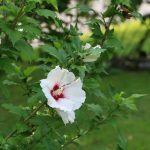
Hibiscus - care instructions as a garden and houseplant
As a houseplant, the hibiscus needs a little more care than in the garden. This is normal because the conditions in the bucket are different from those in the field. Nevertheless, it is worth taking a look at the care instructions, because the so-called Chinese Zimmerhibiskus feels very comfortable indoors and pampers its owners with beautiful Blossoms.
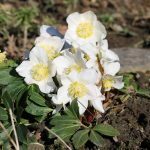
Christmas rose, snow rose, Helleborus niger - location & care
Snow rose, Christmas rose, hellebore - these terms mean a plant with an extraordinary flowering time. In the cold winter months, Helleborus niger brings color to the bare garden landscape. The evergreen plants are resilient and undemanding. Only a few points have to be met in terms of care and location so that the winter bloomers feel comfortable.

Anthurium, anthurium, flamingo flowers - care and reproduction
Everyone knows it, the bright red flamingo flower. With lush green leaves and the beautiful red bracts, it sets accents in the private home or in business premises. In our special care instructions for the flamingo flower, we explain how anthuriums are cared for, as these are originally called tropical plants.

Cyclamen, indoor cyclamen, cyclamen - care
The cyclamen (Cyclamen persicum) has been decorating Europe's rooms since the 1960s, filling them with fresh color, especially on gray winter days. Numerous varieties offer an extensive range of colors. The cyclamen, the primrose plant, can be cultivated for up to 30 years with good care. Find out in professional care instructions how you too can enjoy your indoor cyclamen for a long time with the right care.

Amaryllis, knight star - overwintering and care after flowering
With its large, intensely colored flowers, the knight's star illuminates the dreary winter. As a potted plant and cut flower, the hippeastrum is particularly popular in the Advent and Christmas season. Since it needs different conditions in each of its growth phases, care is demanding. The instructions provide you with the knowledge you need to care for the amaryllis appropriately.
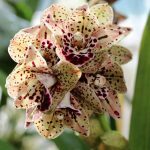
Cymbidium Orchid: Care from A-Z - Getting the Cymbidium to bloom
The Cymbidium Orchid owes its name to the shape of its decorative flowers. With their curved, boat-like lips, they are reminiscent of a boat, which means "kymbos" in Greek. The beauty is native to Thailand, Burma and northern India, as well as Australia and Indonesia. In the local latitudes, hybrids are offered in the trade, which are particularly suitable for indoor culture due to their crossings. With the right care, the Cymbidium will bloom in the most beautiful colors.
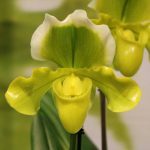
Lady's slipper orchid, Venus shoe, Paphiopedilum - care from A-Z
One of the most popular orchid species on the local window sills is the lady's slipper orchid, also known here as the Venusian shoe. Due to its origin in Thailand, the Philippines or Borneo and Sumatra, it is used to subtropical climates and is therefore very sensitive to cold. Cultivation in the bucket is therefore essential. The care of the lady's slipper orchid is a bit time-consuming, but if it is given the right one, it will thank you with many beautiful flowers and a long life.

Rush cactus, Rhipsalis baccifera - care, tips & tricks
The rush cactus, Rhipsalis baccifera, is an easy to care for and easy to keep cactus, but it is dependent on a suitable location. It is not hardy, but can be kept in the wild during the summer months. In terms of growth type, the rush cactus does not remind you of classic cacti, as it almost always grows overhanging and also has no spines. Nevertheless, it belongs to the cactus family.

Rod cactus, Rhipsalis pilocarpa - care, tips & tricks
Ripsalis pilocarpa is a cactus from the genus Rhipsalis. Its home is the Brazilian rainforests. The rod cactus is an easy-care plant that needs little water and a well-drained substrate. The cactus can be grown indoors all year round and develops white flowers in spring and red berries as fruits after flowering. In summer, Ripsalis pilocarpa is happy to be in the open air; it does not need special winter quarters.
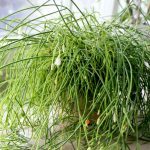
Coral cactus, Rhipsalis cassutha - care, tips & tricks
The coral cactus, botanically Rhipsalis cassutha, is an extremely easy-care plant that is also ideal for beginners. With its long shoots, it is particularly suitable as a hanging plant. The flowering time of the cactus is in November. Rhipsalis cassutha can be grown indoors all year round.
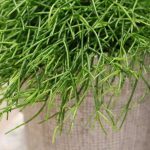
Coral cactus, rush cactus, Rhipsalis cereuscula - care, tips & tricks
The coral cactus, also called rush cactus, is an easy to care for houseplant. The name cactus is a bit misleading here, because even if it belongs to the genus of cacti, it does not have the typical appearance. It has many green shoots with round white fruits, which make an impressive picture. To the delight of many amateur gardeners, spines do not form on the decorative cactus. The plant, which comes mainly from Brazil, is also ideal for beginners due to its simple care.
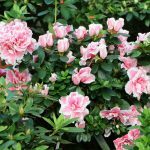
Indoor azalea - care & overwintering of azaleas as a houseplant
Indoor azaleas are often referred to as "bouquets in pots". This is due to their abundant flowering, which delights us in the gray and dreary winter months. Unfortunately, the plants are often disposed of after the flowering period. The room azalea becomes very old and, with proper care, will develop many flowers in the following year.
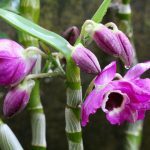
Dendrobium nobile - care, cutting and propagation of the orchid
Dendrobium nobile is also known in Germany as the grape orchid, as the numerous flowers almost look like stand together in vines and, in contrast to the moth orchid (Phalaenopsis), formed directly on the stem will. The East Asian orchid genus delights in blooming over the cold season and enchants with one pleasantly intense fragrance that can be found in all living rooms with the right care thanks to the numerous flowers unfolds.
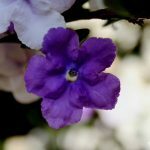
Brunfelsia, Brunfelsia uniflora - care instructions
The flora of the tropics has a lot to offer. In addition to orchids, the fragrant Brunfelsia flowers intoxicate with their aroma and appealing worlds of color. In addition to Brunfelsia americana and Brunfelsia lactea, Brunfelsia uniflora, also known as Manaka, is a real eye-catcher over the winter. Once the blue flowers bloom in all their glory, the dreary winter is gone. All you need to do is care for the poisonous drop plant.
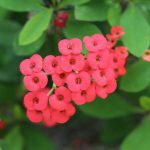
Christ thorn, Euphorbia milii - care and propagation by offshoots
The Christ thorn, botanically Euphorbia milii, is a pretty and decorative plant with red, white or yellow flowers. In addition, the plant is extremely robust and easy to care for and can also be cultivated by beginners without any problems. Unfortunately, the unsuspecting-looking plant is very poisonous and should only be touched with gloves: so be careful when caring for it!
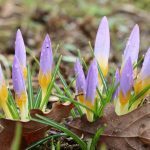
Crocus, Crocus - plants and care - information on flowering time and toxicity
When the first crocuses lift their closed calyxes out of the ground at the beginning of March, plant lovers know that spring has arrived. With around 100 species, the iris family characterizes the gardens and meadows of Germany and inspires with the variety of colors, which is presented splendidly at low altitude. Because it is easy to plant over onions, the crocus is one of the simplest garden plants and is easy to care for, even in pots.
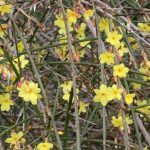
Winter jasmine, Jasminum nudiflorum - care from A-Z
The winter jasmine, botanically called Jasminum nudiflorum, is one of the special features among the flowering shrubs, because the yellow flowers appear on the wood at a time when not much color can otherwise be found in our gardens is. With a flowering time between December and March, the winter jasmine is a real winter bloomer, which with its numerous flowers adds bright yellow spots. In contrast to many other types of jasmine, winter jasmine is unfortunately not fragrant.

Clivie, Clivia - Care from A-Z - Getting clivia to bloom properly
The Clivie is one of the most enchanting flowering plants available in Germany. The older it gets, the more splendid it will thrive, provided it is properly cared for and the plant is optimally prepared for the flowering season. Detailed care instructions with tips on what to look out for can be found at the plant expert.

Schopflilie, pineapple flower, eucomis - care - instructions
The flower lily is known as a pineapple flower thanks to its imposing shape. It is a pretty and easy-care garden plant for the summer, but it can also be kept as a houseplant. It should be noted that it has a special scent that not everyone likes. In nature, this serves to attract insects to pollinate. The botanical name Eucomis means "nicely coiffed" and describes the extravagant wreath of leaves on the tip of the inflorescence.

Laurel viburnum, Mediterranean viburnum, Viburnum tinus - care & cutting
Laurel viburnum inspires as a feast for the senses. The softly shimmering, evergreen foliage drives the dreariness out of the winter garden. In late winter, the delicate, white flowers with a seductive scent awaken the anticipation of spring, only to transform into black and blue fruit decorations in summer. These instructions guide you through the professional maintenance program of the Viburnum tinus in a practical manner. Read here how to skilfully cut the floral piece of jewelery and keep it safe for the winter.
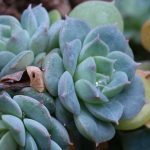
Echeveria habenbergii - profile, care and overwintering
Echeveria habenbergii is a frugal houseplant that does not take much time to care for. Therefore, the plant is also ideal for people without green fingers or experience. If the few necessary factors are taken into account in the cultivation of the plant, it will reward the effort with a decorative and exotic flower - and that in winter of all places.

Milky Star, Ornithogalum dubium - care of the flower as a houseplant
Milky Star, Ornithogalum dubium, Gärtnerschreck or even Gärtnertod - the South African plant has many names and some peculiarities. As a decorative and exotic flower, it can not only decorate bouquets, the plant also looks great as a houseplant. In addition, the milk star can even be cultivated by newcomers to plant care without any problems. For this, however, a minimum of knowledge about the orange blooming exotic is necessary.
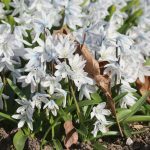
Mishchenko squill, Scilla mischenkoana - care info + pictures
The bluestar lives up to its name. The beautiful bloom in bright blue and white adorns garden paths and flower borders. Botanically known as Scilla mischenkoana, it enchants garden lovers not only with its magical flowers, but also with a striking scent of sweet honey. We describe how to care for bluestars in our care instructions for you. Fortunately, the Scilla mischenkoana is a very easy-care spring bloomer that will give you a lot of pleasure with its pretty blooms.



